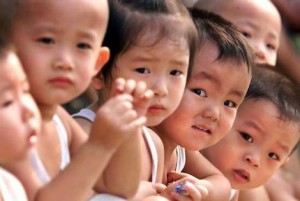 It is no secret that China is suffering from a shortage of girls. The Population Research Institute (PRI) has long publicized the dearth of baby girls in China, which is leading to increases in child marriage and sex trafficking. Even the United Nations (UN) and World Health Organization (WHO) have taken note; just two years ago they issued a statement on sex selection. However, recognizing a problem and perceiving its underlying cause (and thus the key to its solution) are two different things entirely. The UN/WHO report echoes the prevalent view, placing the blame for the gender imbalance almost entirely on the low cultural status of women. However, in a recently published study, PRI Research Analyst, Anne Morse, proposes that this cannot be the case and asks the question: “Why have sex ratios in China risen markedly over the time when women’s status has been improving?” Morse shows that the moral disease of sex-selection has its source not only in the cultural perception of women, but also in China’s strict limits on fertility.
It is no secret that China is suffering from a shortage of girls. The Population Research Institute (PRI) has long publicized the dearth of baby girls in China, which is leading to increases in child marriage and sex trafficking. Even the United Nations (UN) and World Health Organization (WHO) have taken note; just two years ago they issued a statement on sex selection. However, recognizing a problem and perceiving its underlying cause (and thus the key to its solution) are two different things entirely. The UN/WHO report echoes the prevalent view, placing the blame for the gender imbalance almost entirely on the low cultural status of women. However, in a recently published study, PRI Research Analyst, Anne Morse, proposes that this cannot be the case and asks the question: “Why have sex ratios in China risen markedly over the time when women’s status has been improving?” Morse shows that the moral disease of sex-selection has its source not only in the cultural perception of women, but also in China’s strict limits on fertility.
Morse takes a nuanced approach to the problem, contending that for a society to practice sex selection, three components must be in place: the society must have a cultural preference for males, it must have easy access to prenatal sex-determination tests and abortion, and it must have low fertility. If any one of these elements is absent, the society can evade a gender imbalance; when all three are present—as they are in China—a gender gap of noticeable proportions is sure to follow.
With the infamous one-child per family policy, China hit the brakes on its fertility levels. Fertility was cut in half, dropping from 2.9 children per couple to 1.6—well below the replacement level of 2.1. And if you look at the babies that China is having, it is hard to ignore that they are disproportionately male. Morse has done the numbers, and finds that from the years 1990-2013, China is short some 16 million girls. Even with the recent relaxation of the one-child policy, it appears that the gendercide will continue as long as the government limits fertility.
Admittedly, the UN is right in saying that the standing of women in Chinese and other cultures needs to be improved. In recent years, the status of China’s women has risen remarkably. While the improved treatment of women has dulled the knife of sex-selective abortion, it remains sharp enough to kill nearly a half million girls in China each year. The ratio of female abortions to male abortions is no longer growing, yet it is still much safer to be an unborn boy in China than it is to be an unborn girl.
Morse concludes that an accurate assessment of the problem must take into account each of the three factors. Most especially, Morse argues that we cannot discount the important role that fertility rates play in sex selection: “Fertility does matter. Decreasing fertility has huge effects on sex-selective abortions. . . . As fertility falls, the chance of having a boy decreases along with it.” In a society where parents would rather have a son than a daughter, any state-imposed limit on a family’s fertility can prove fatal for a child conceived with two X chromosomes.
Morse’s study rebuts the narrow focus of those who, like the UN and the WHO, ignore fertility and discount prenatal gender testing when assessing the sex-selection problem. An understanding of the problem must give equal weight to all factors, not just the cultural status of women. Morse carefully balances the three, concluding that although “demographic changes alone cannot solve the problem of sex selective abortions. . . . Demography must be considered, because as China’s total fertility declines, sex selection increases.”
Anne Morse’s study, “Sex Selection in China and Its Demographic Causes,” is available from the Catholic Family & Human Rights Institute. It is a valuable addition to the literature on China’s ongoing gendercide, and the light it sheds on the issue shows all the more how state control of fertility in China is problematic.



